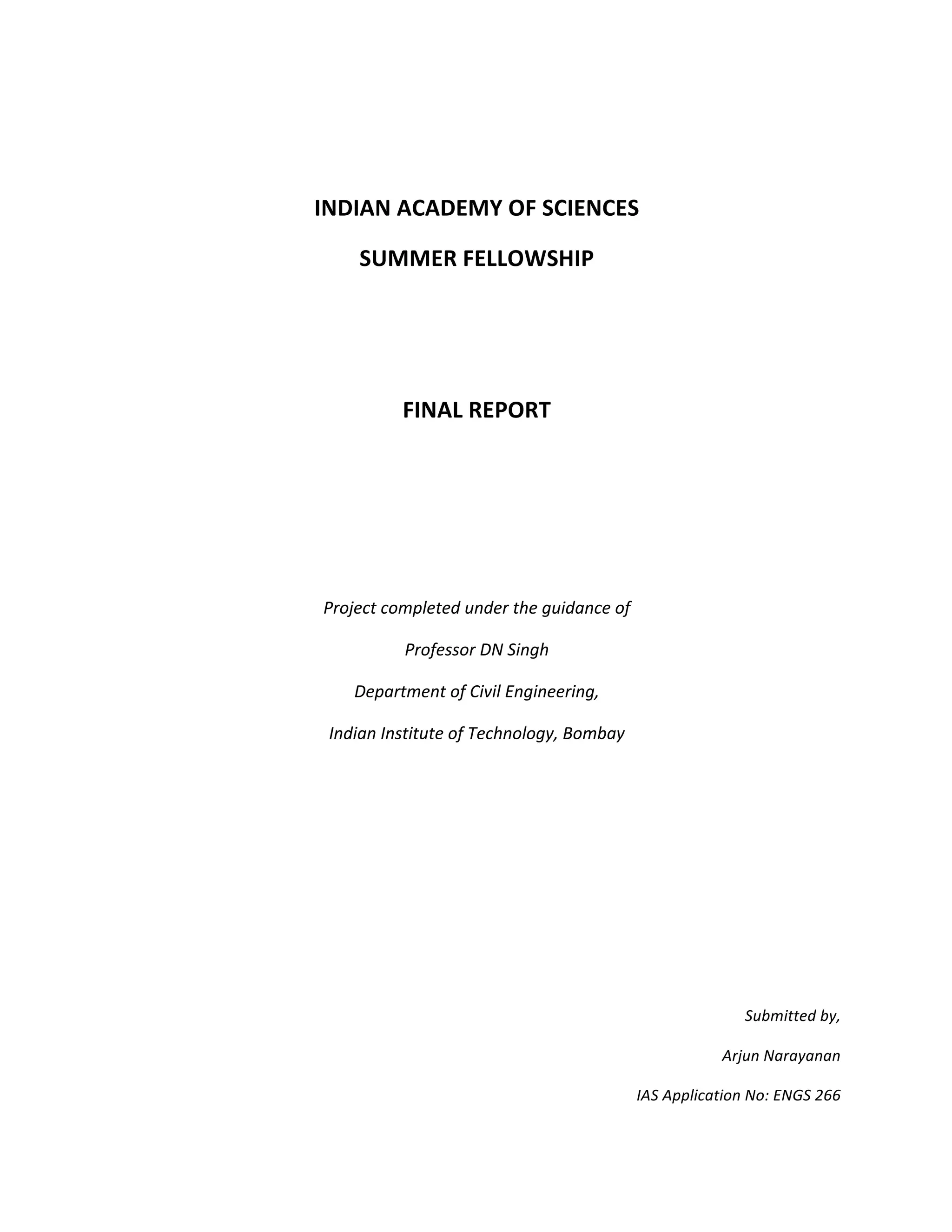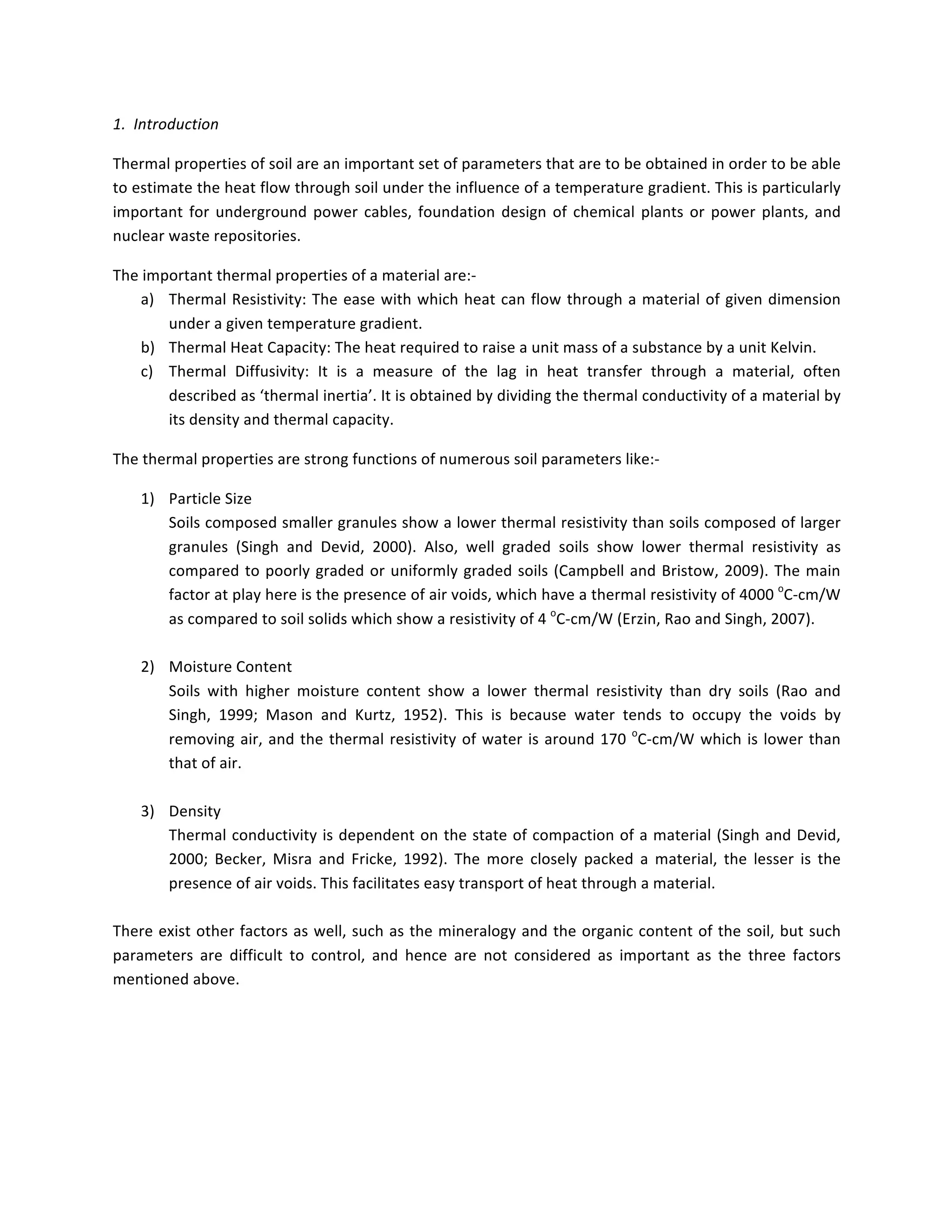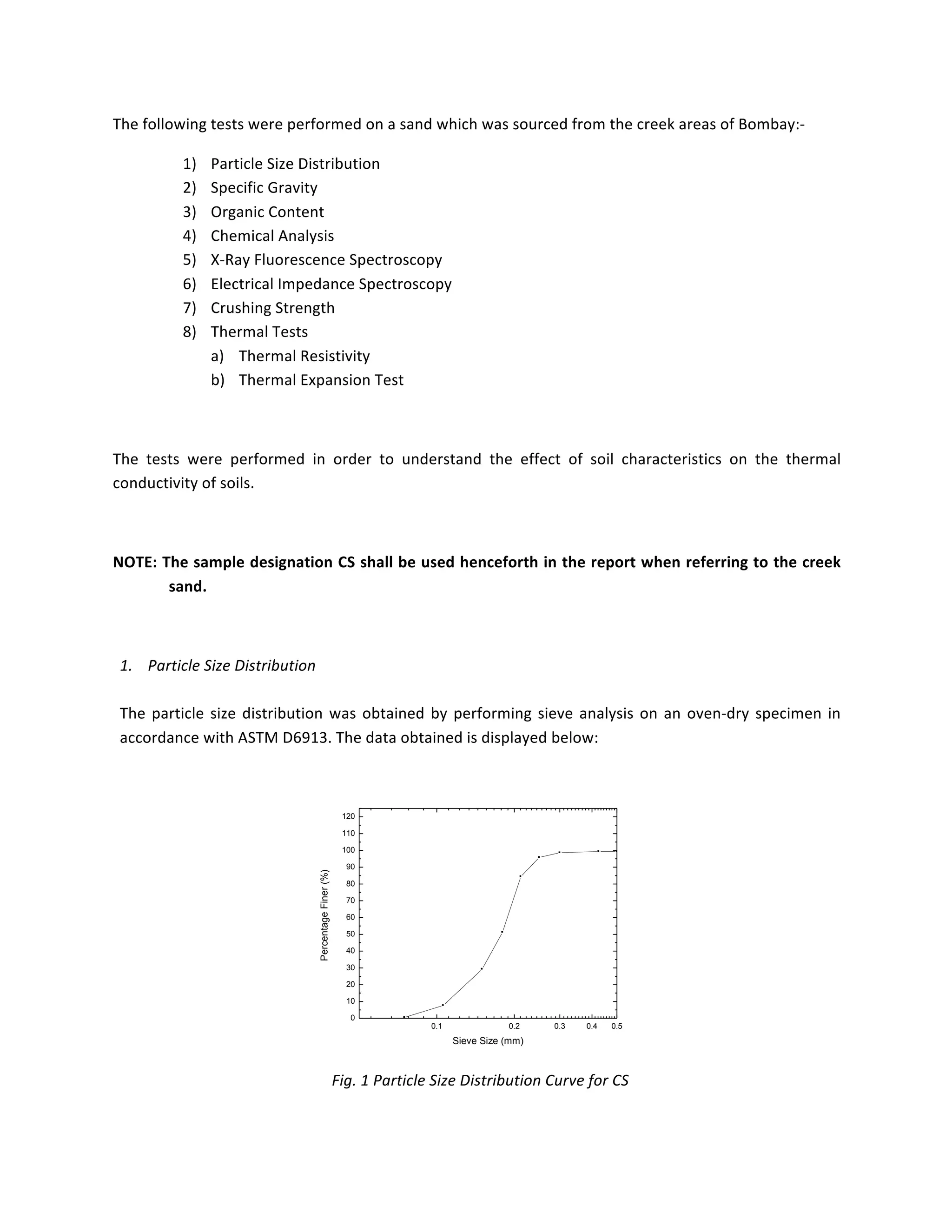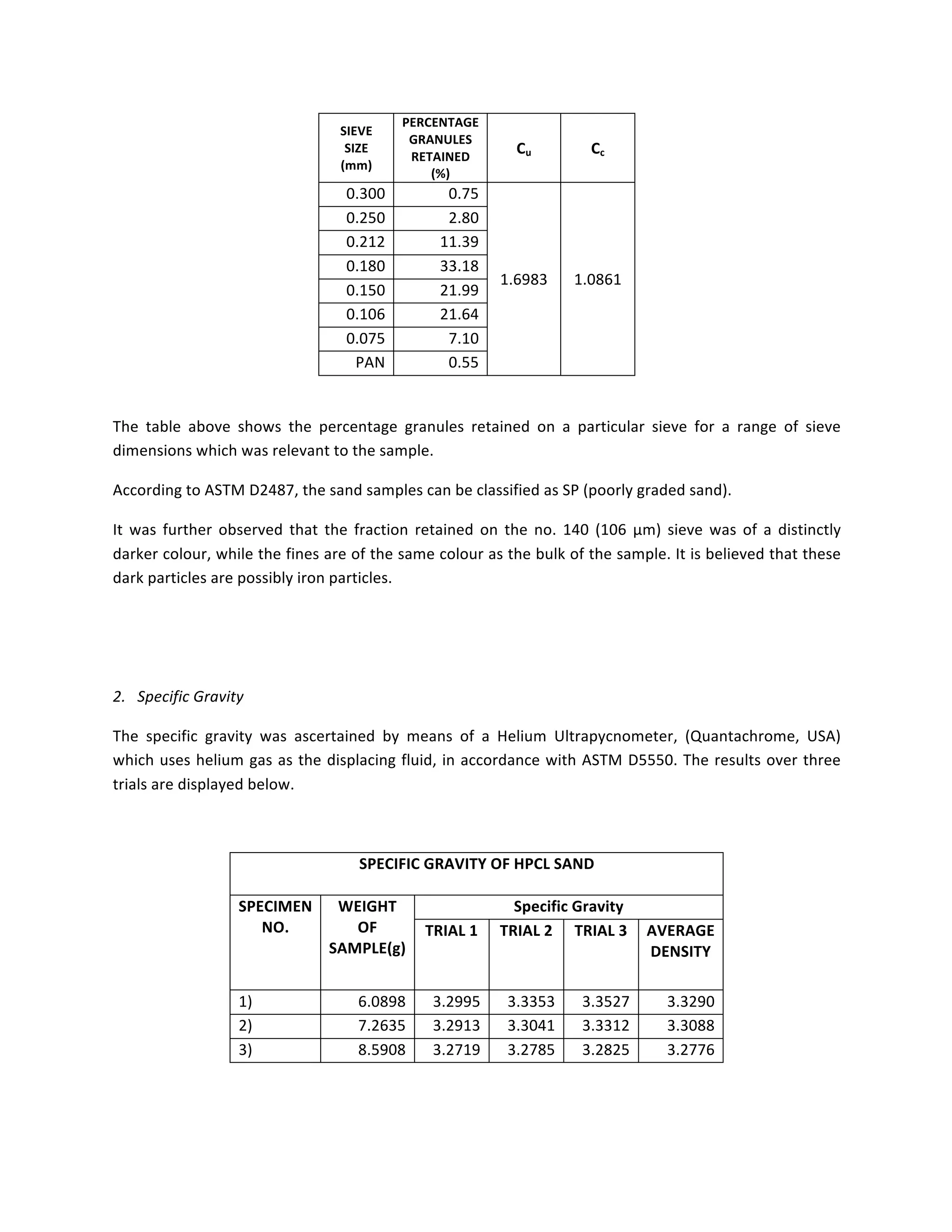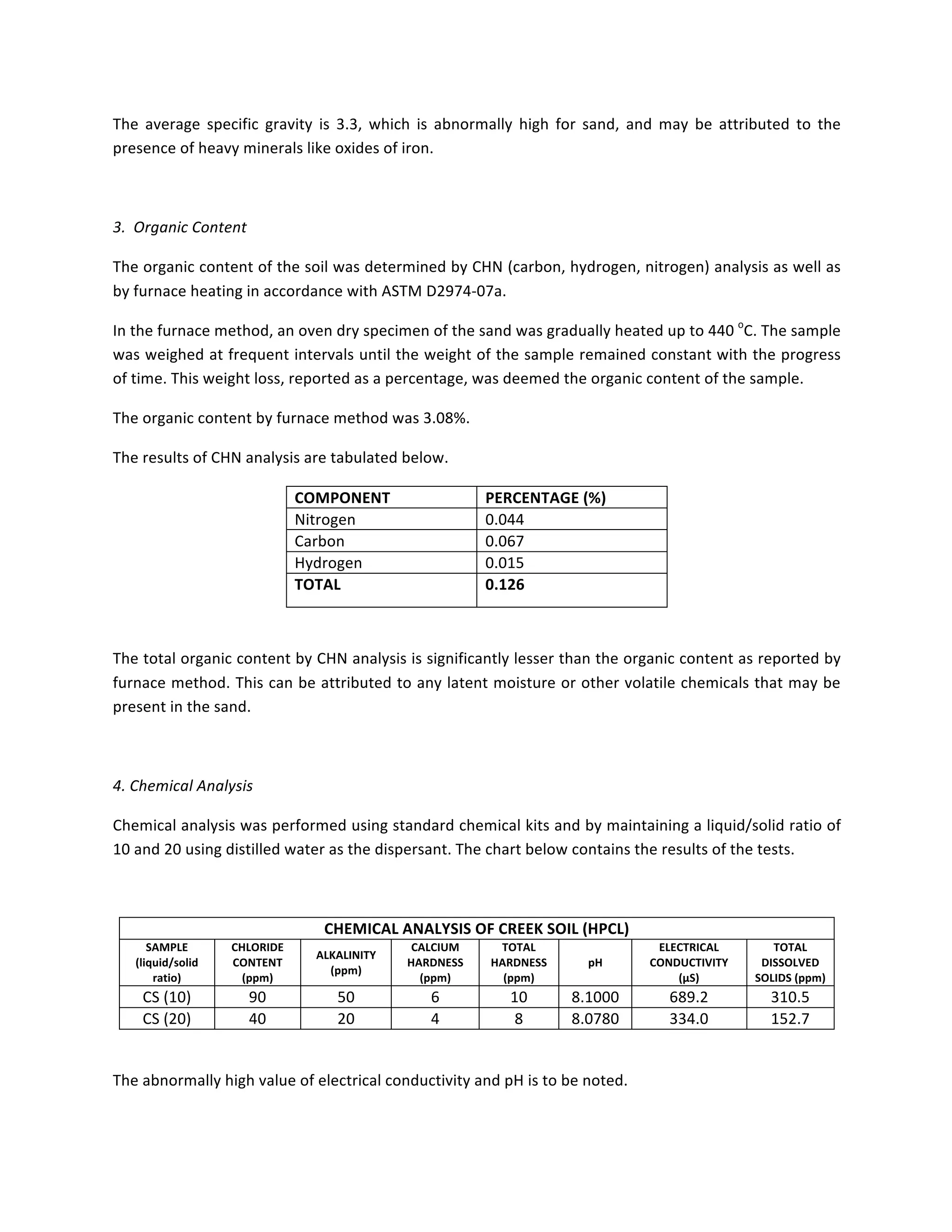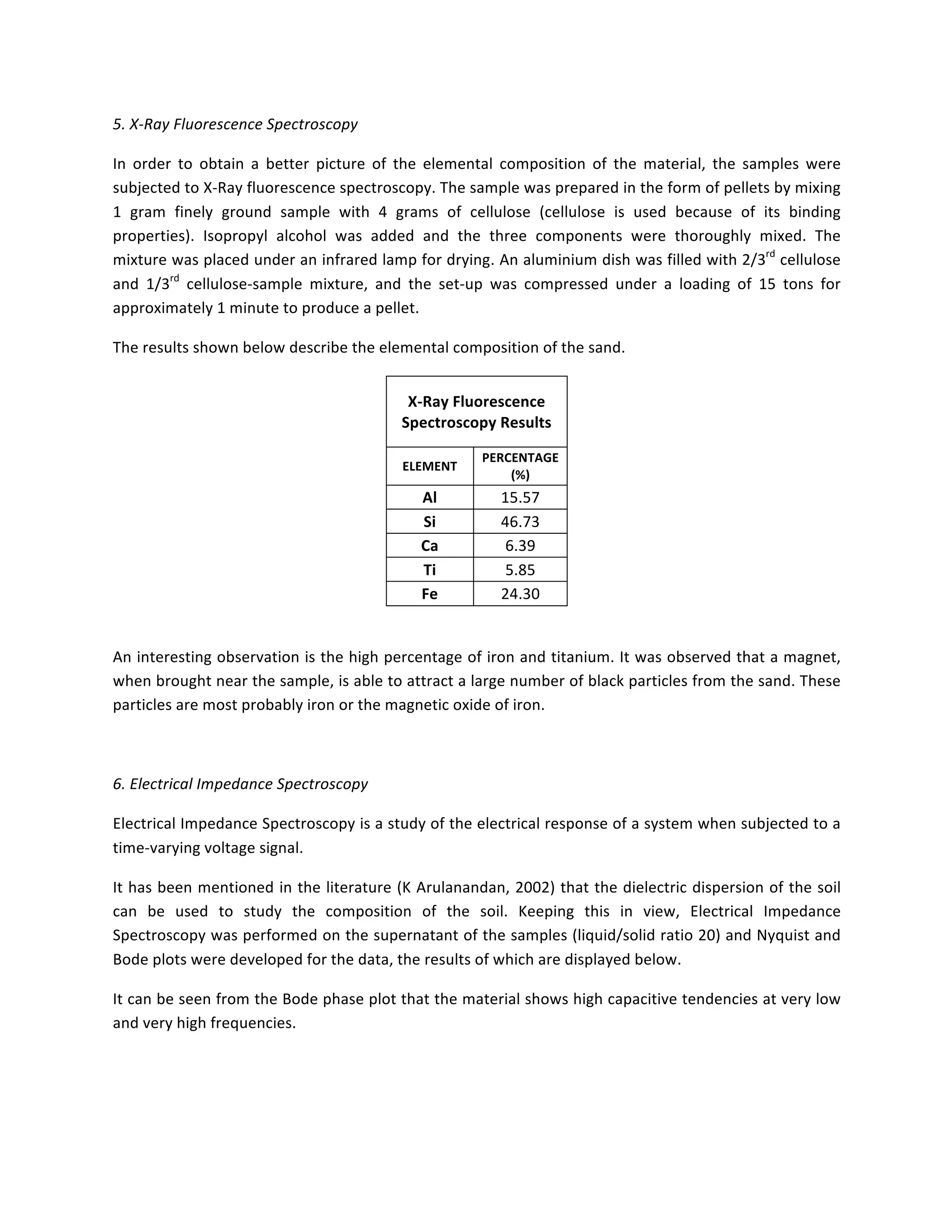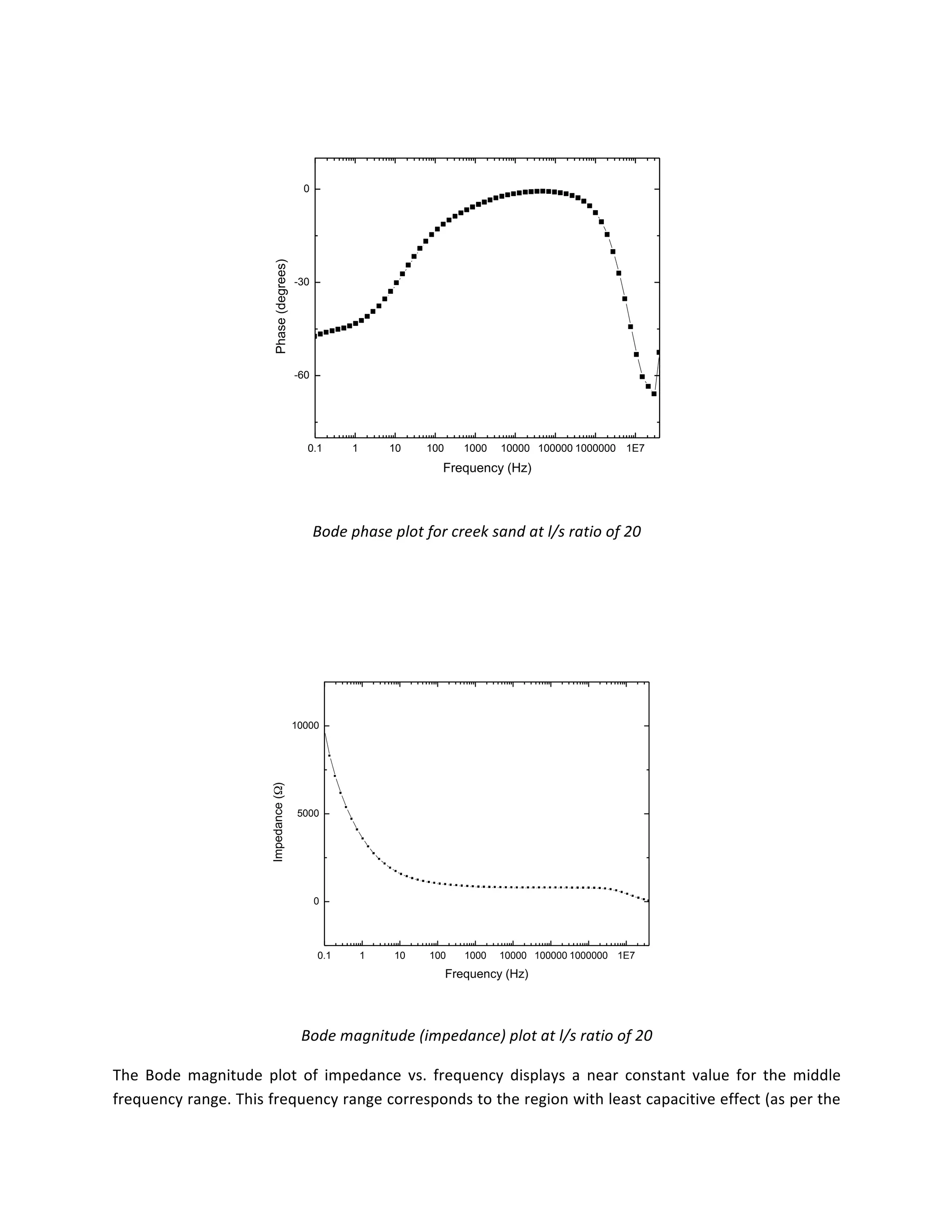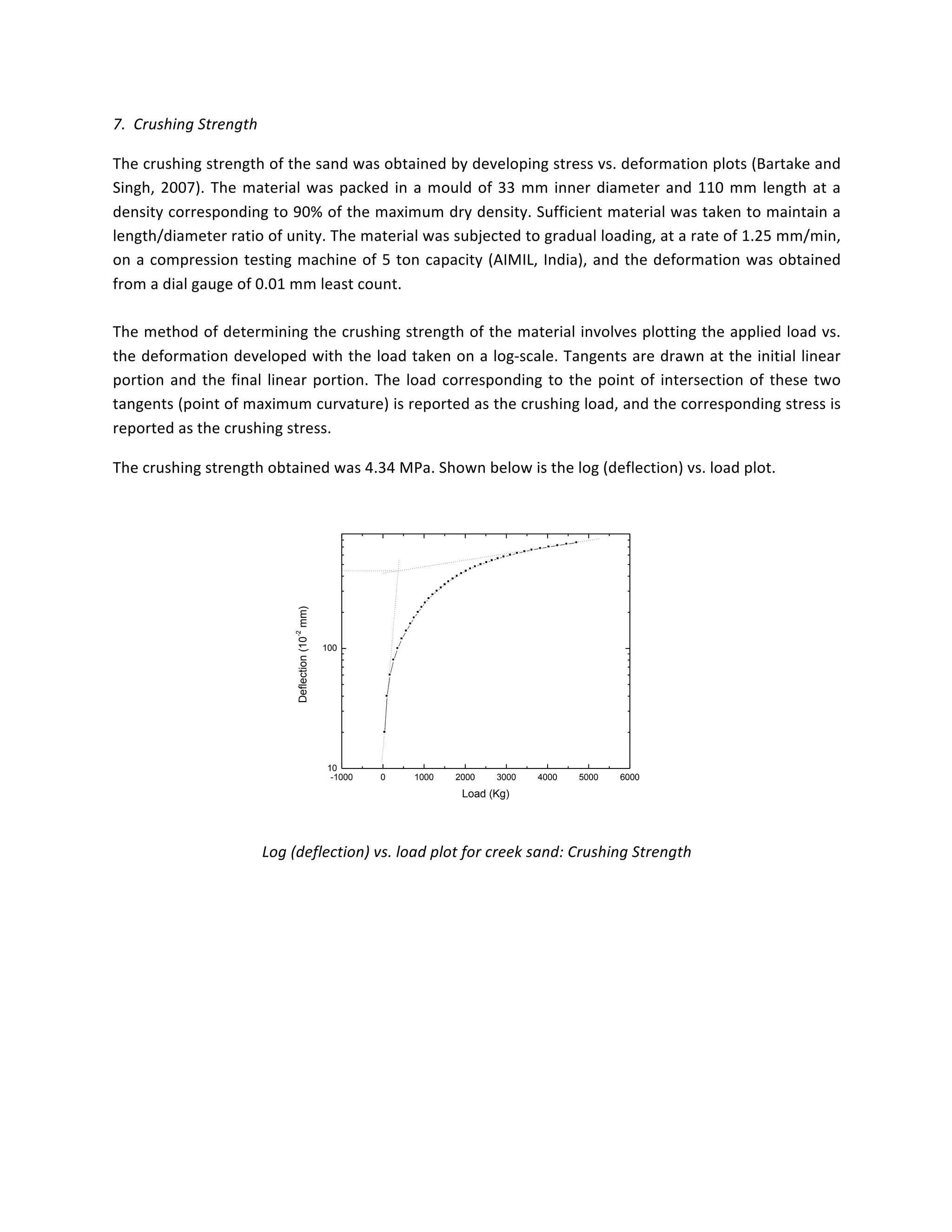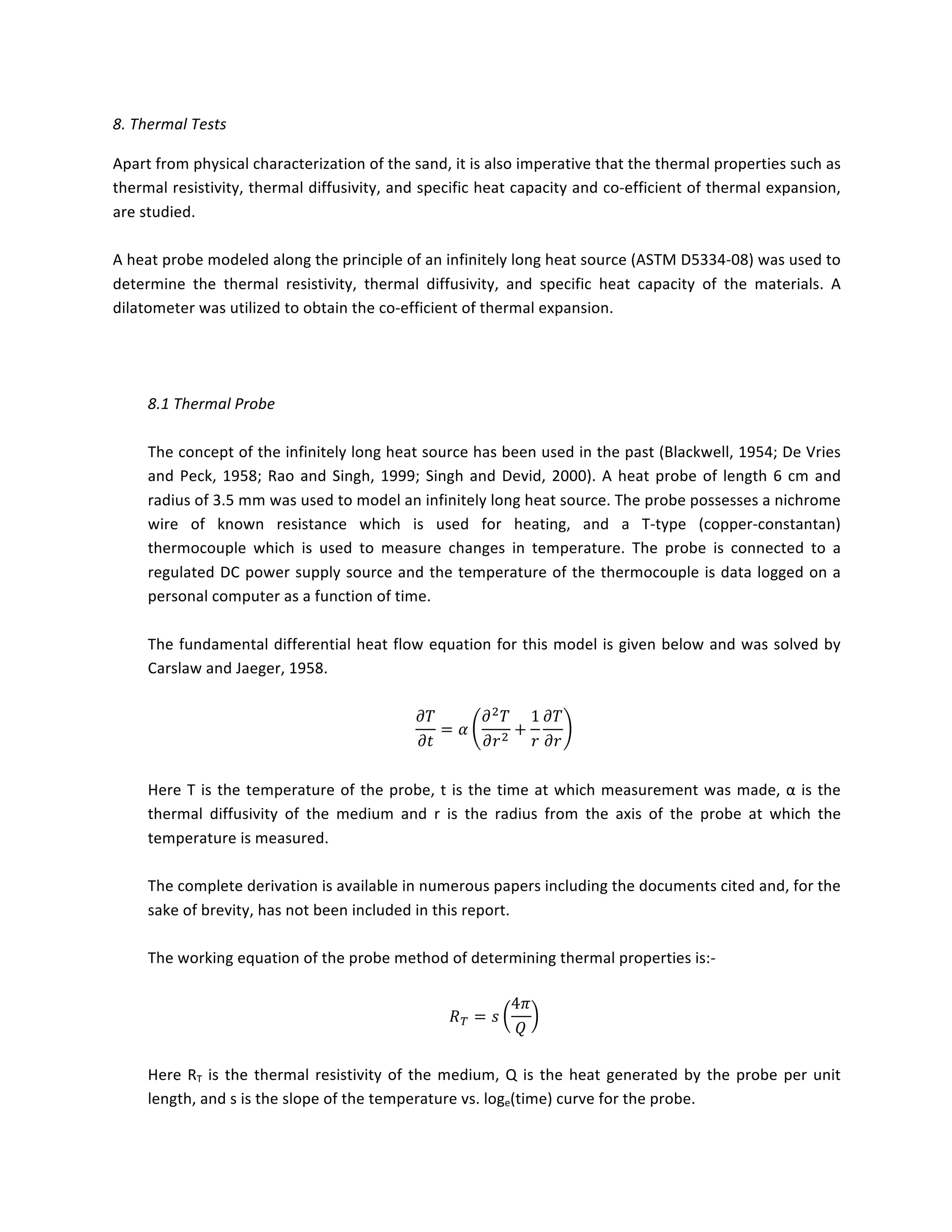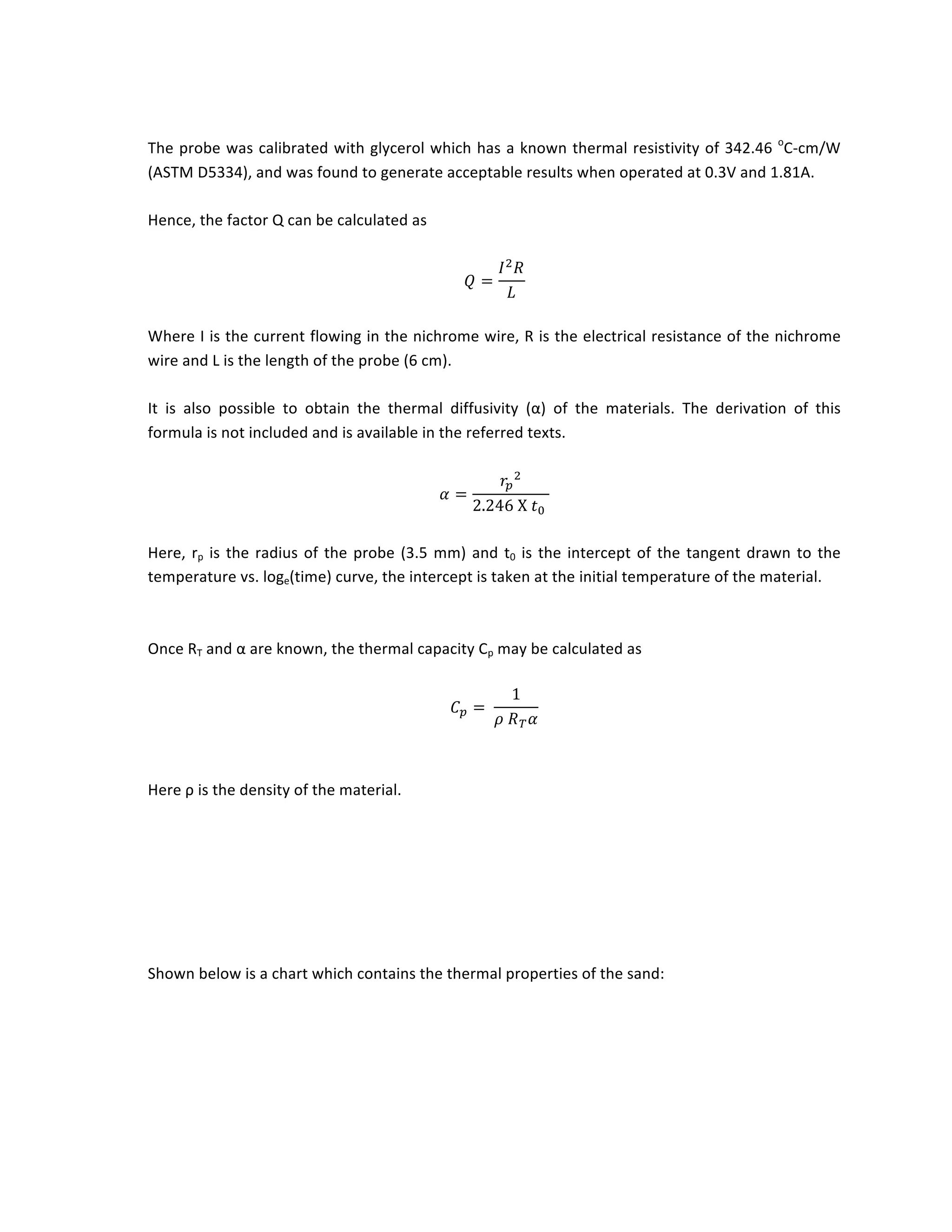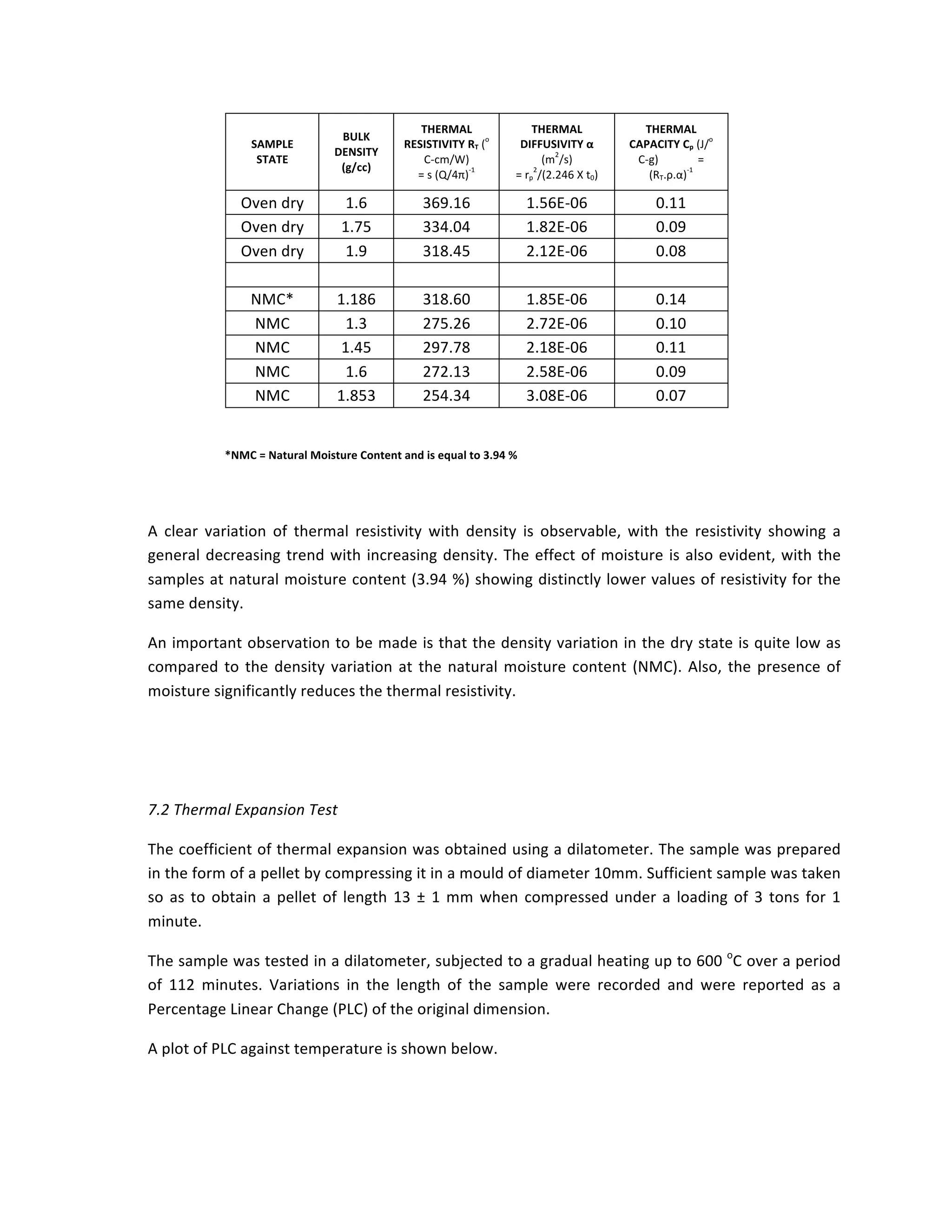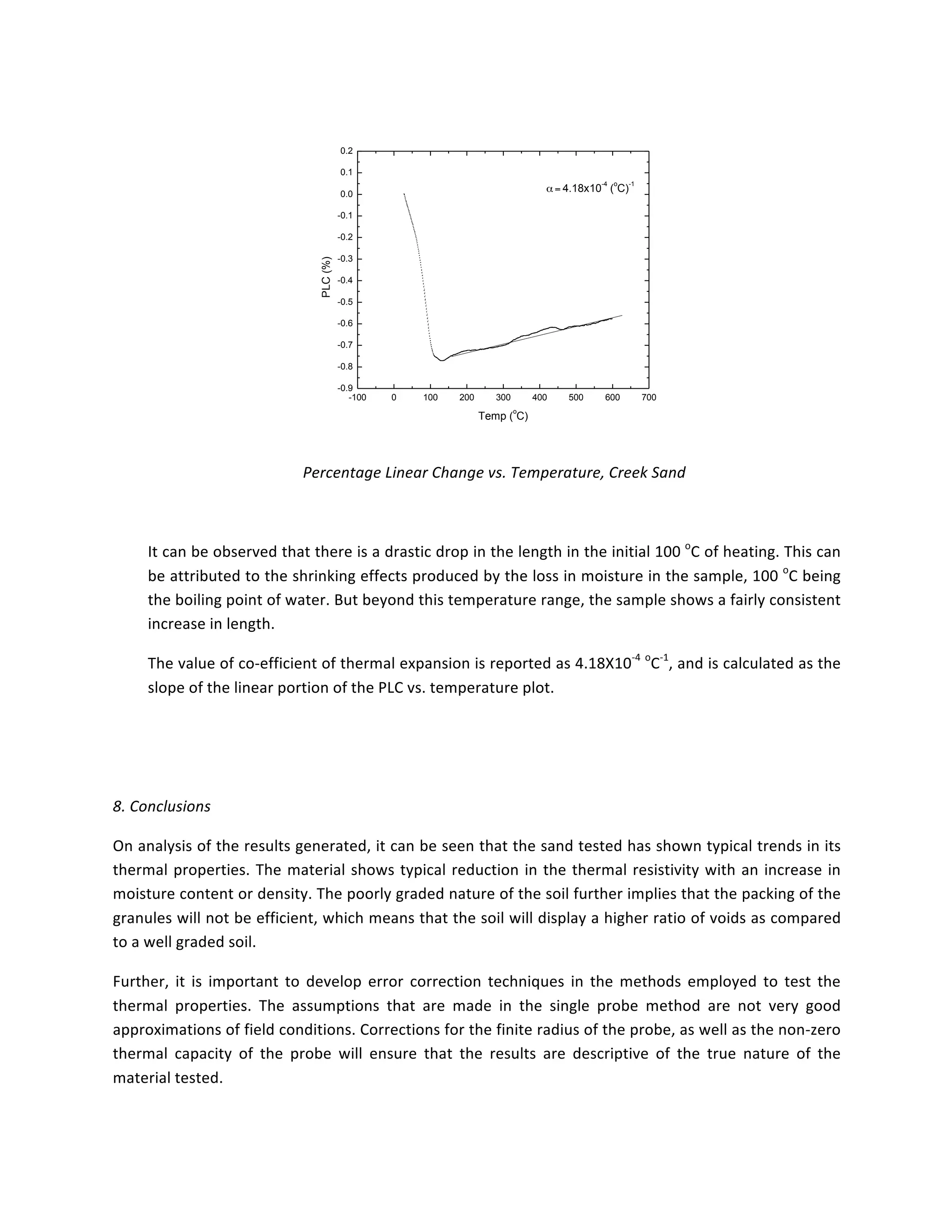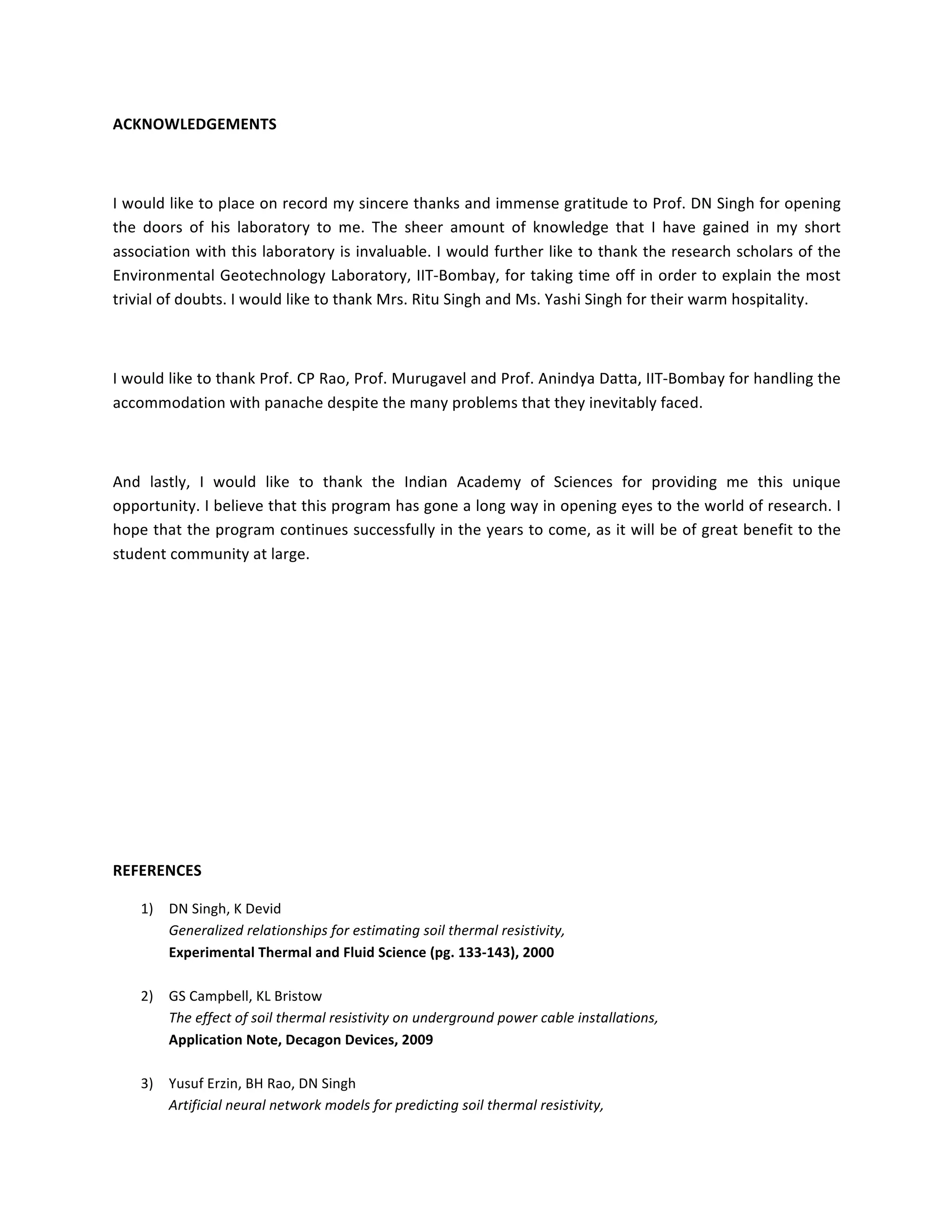The document provides details from a final report submitted by Arjun Narayanan for an Indian Academy of Sciences summer fellowship. Tests were conducted on creek sand to determine its thermal properties and their relationship to soil characteristics. Particle size analysis showed the sand was poorly graded. Chemical analysis and XRF found high iron and titanium content. Electrical impedance spectroscopy and crushing strength tests were also performed. The results will help understand how soil parameters like particle size, moisture, density affect thermal conductivity.
